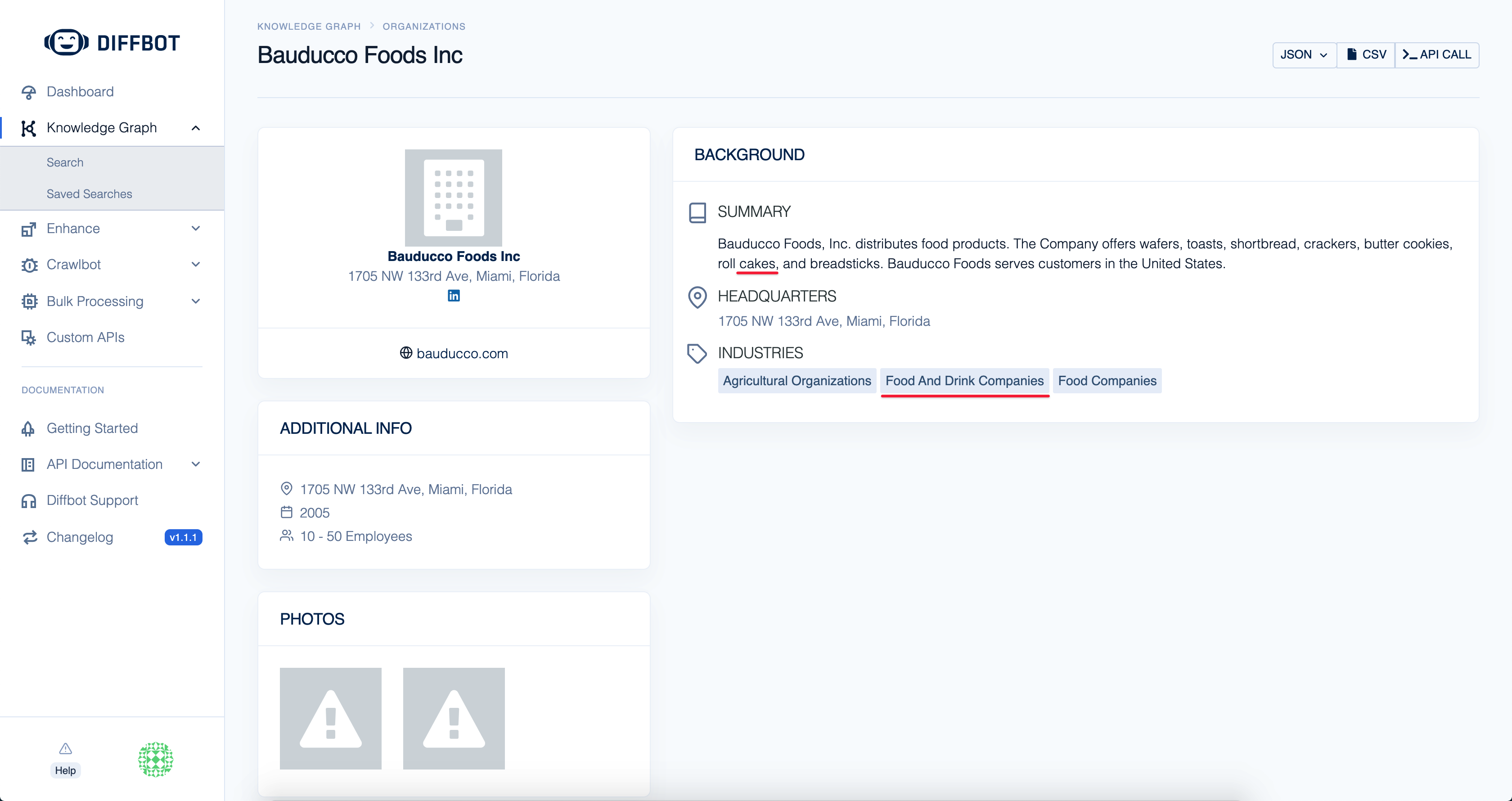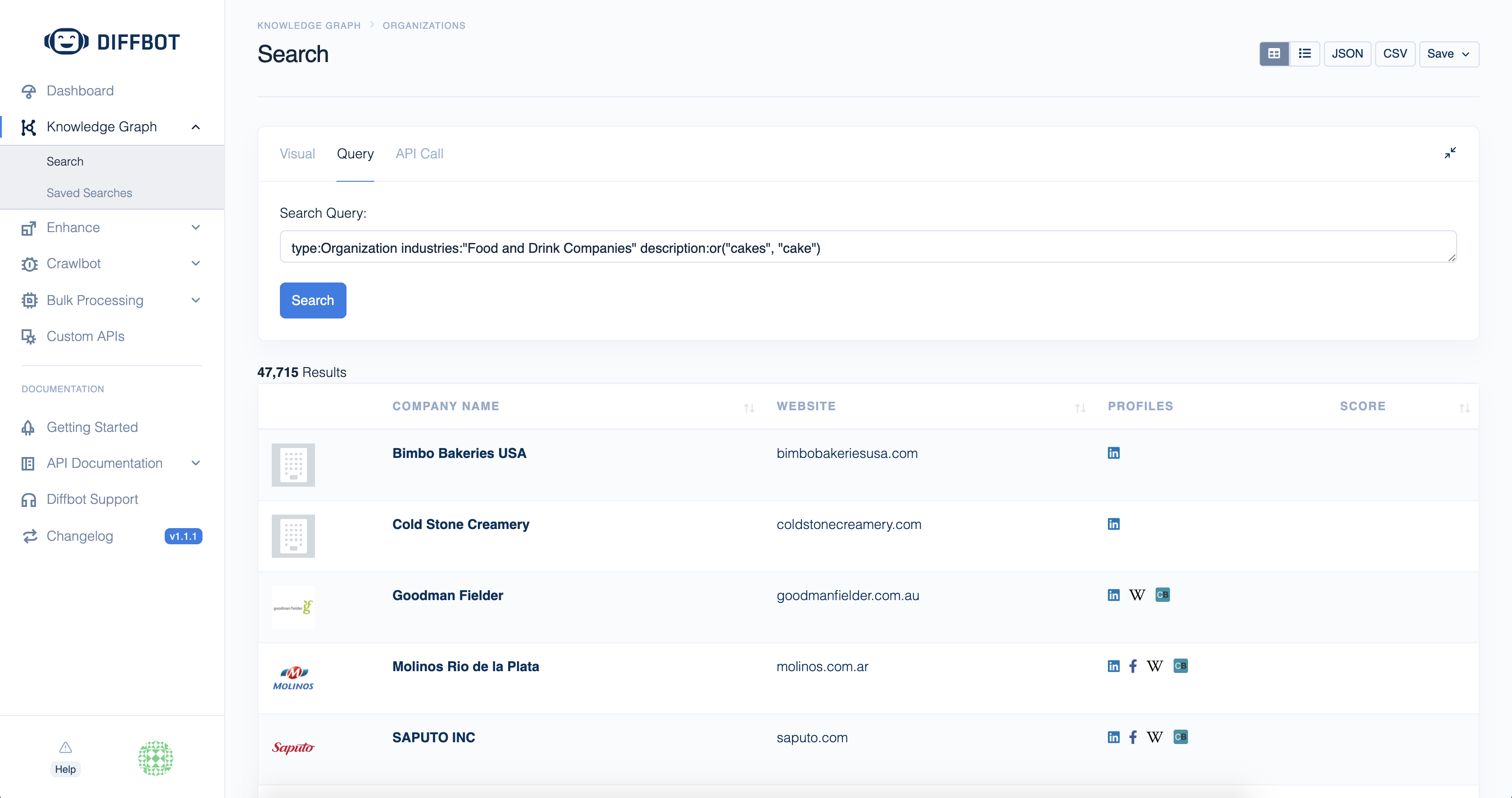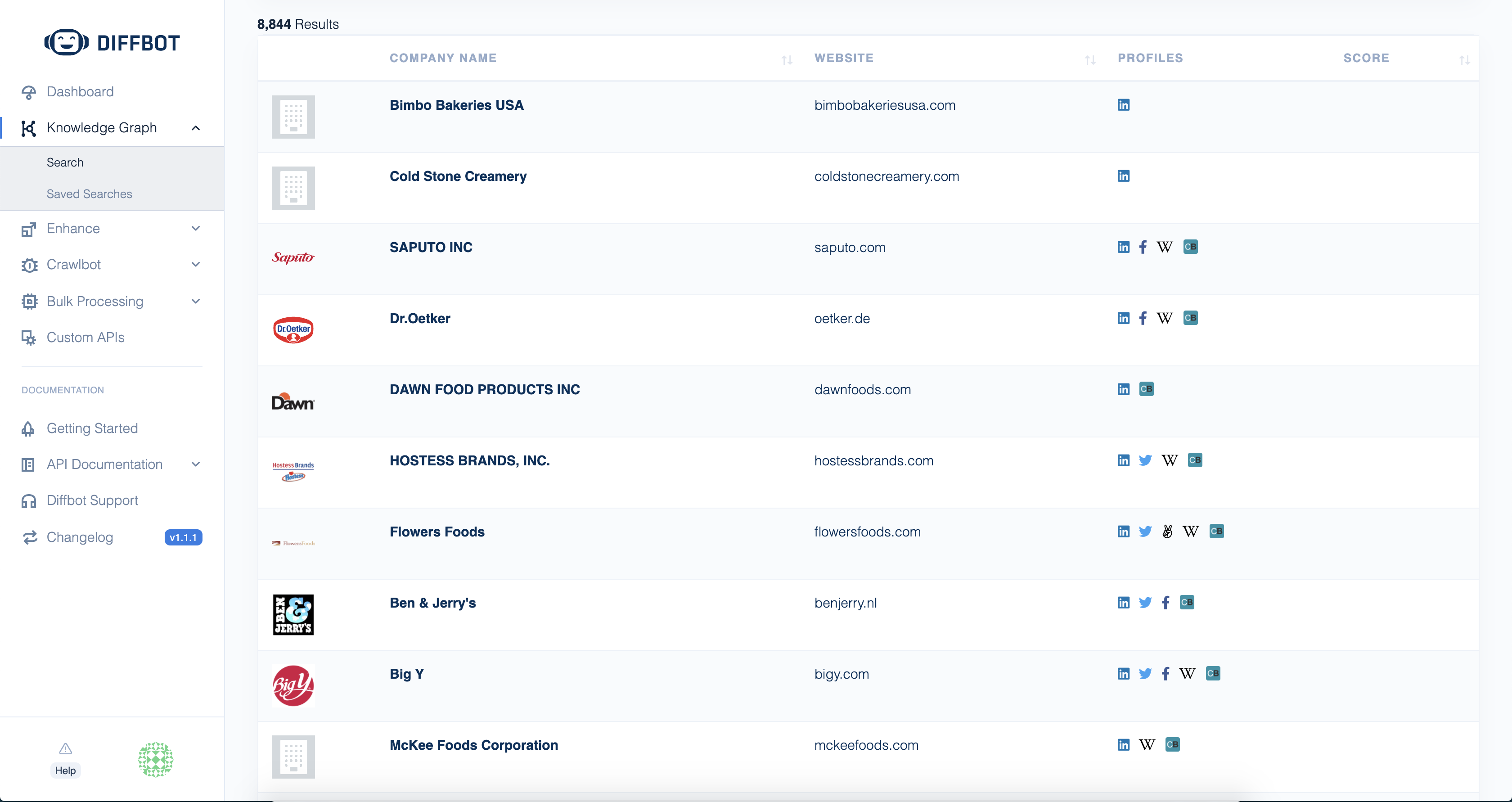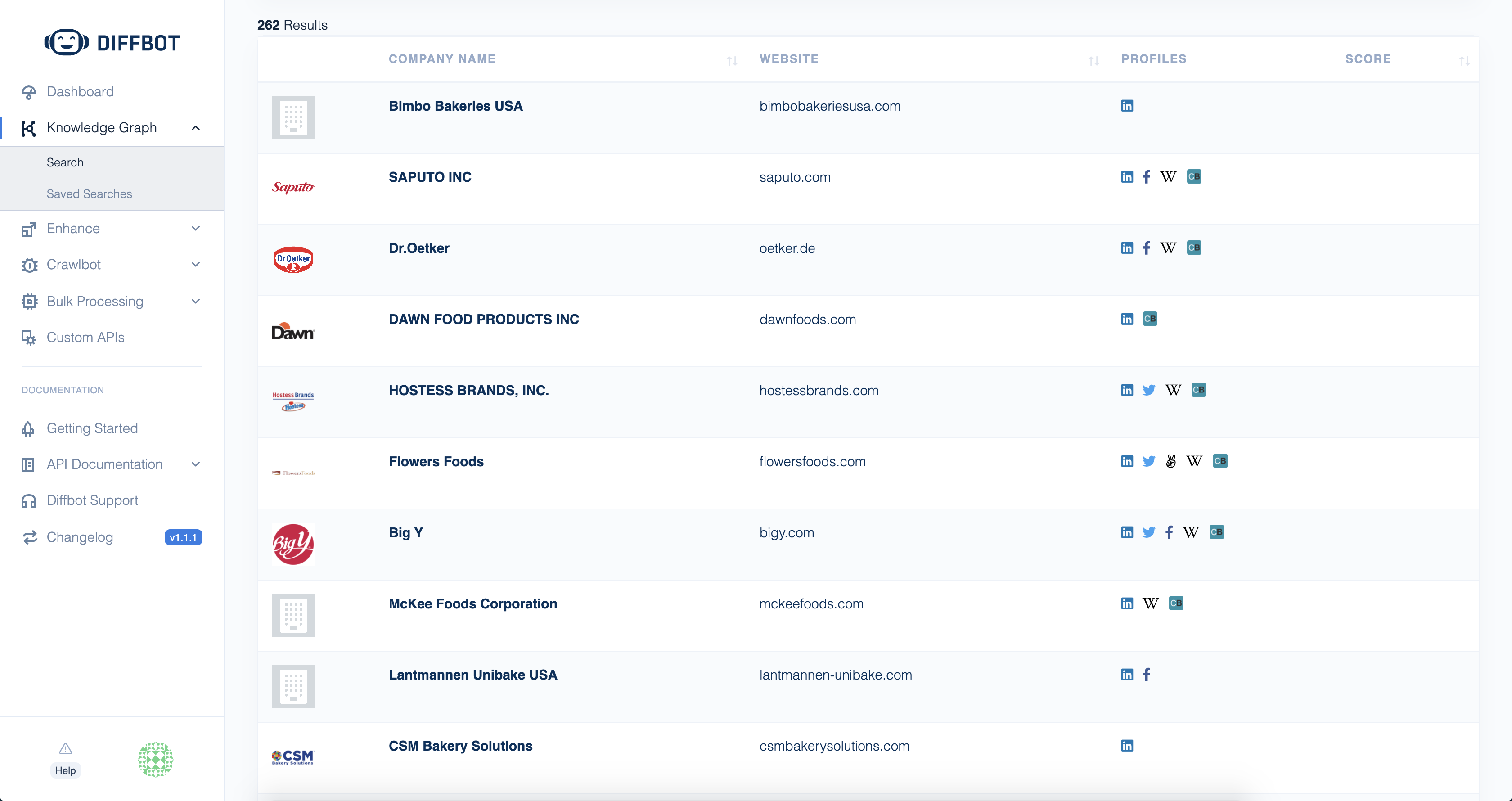Organizations are one of our most popular standard entities in the Diffbot Knowledge Graph, for good reason. Behind 200M+ company data profiles is an architecture that enables incredibly precise search and summarization, allowing anyone to estimate the size of a market and forecast business opportunity in any niche.
Pre-Requisites
- A Diffbot account – Sign up for a free trial or login to follow along.
- Some familiarity with DQL (Diffbot Query Language) will make for easier skimming.
Step 1 – Find Companies Like X
In a perfect world, every market and industry on the planet is neatly organized into well defined categories. In practice, this gets close, but not close enough, especially for niche markets.
What we’ll need instead is a combination of traits, including industry classifiers, keywords, and other characteristics that define companies in a market.
This is much easier to define by starting with companies we know that fit the bill. Think of it as searching for “companies like X”.

As an example, let’s start with finding companies like Bauducco, producer of this lovely Panettone cake. This is a market we’re hoping to sell say, a commercial cake baking oven to.
The closest definition of a market I might imagine for them is something like “packaged foods”. We could google this term and get some really generic hits for “food and beverage companies”, or we can do better.
We’ll start by looking this company up on Diffbot’s Knowledge Graph with a query like this
type:Organization homepageUri:”bauducco.com”
Next, click through the most relevant result to a company profile.
Now let’s gather everything on this page that describes a company like Bauducco.

Under the company summary, the closest descriptor to their signature Panettone is “cakes”. Note that.
Under industries, they might be involved in agriculture to some degree, but we’re not really looking for other companies that are involved in agriculture. “Food and Drink Companies” will do!
That’s it.
Now that we have these traits, let’s construct a search query with DQL:
type:Organization industries:"Food and Drink Companies" description:or("cakes", "cake")

Nearly 48,000 results! That’s a huge list of potential customers. Like the original google search, it’s a bit too generic to work with. Unlike results from Google though, we can segment this down as much as we’d like with just a few more parameters.
💡 Pro Tip: To see a full list of available traits to construct your query with, go to enhance.diffbot.com/ontology.
Step 2 – Remove Irrelevant Traits
What I’m first noticing is that there are a lot of international brands on this list. I’m interested in selling to companies like Bauducco in the U.S., so let’s trim this list to just companies with a presence in the United States.
type:Organization industries:"Food and Drink Companies" description:or("cakes", "cake") locations.country.name:"United States"

Note that there are two “location” attributes. A singular and a plural version. The plural version (“locations”) will match all known locations of a company. The singular version (“location”) will only match the known headquarters of a company.
Down to 8800 results. Much better. We’re not really interested in ice cream companies in this market either (after all, we’re selling a baking oven), so we’ll use the not() operator to filter ice cream companies out.
type:Organization industries:"Food and Drink Companies" description:or("cakes", "cake") not(description:"ice cream") locations.country.name:"United States"
Let’s also say our oven is really only practical for large operations of at least 100 employees. We’ll add a minimum employee threshold to our query.
type:Organization industries:"Food and Drink Companies" description:or("cakes", "cake") not(description:"ice cream") locations.country.name:"United States" nbEmployeesMin>=100

262 results. Now we’re really getting somewhere. Let’s stop here to calculate our total addressable market.
Step 4 – Calculate Total Addressable Market
To calculate TAM, we simply multiply the number of potential customers by the annual contract value of each customer.
TAM = Number of Potential Customers x Annual Contract Value
At a $1M average contract value with 262 potential customers, our TAM is approximately $262M.
This is just a starting point of course, we’ll want to assess existing competition, pricing sensitivity, as well as how much of the existing market would be willing to switch for our unique value proposition. We’ll leave that for another day.
Takeaways
Try replicating these steps for a market of your choosing. The ability to filter and summarize practically any field in the ontology provides limitless potential for market and competitive intelligence.
Need some inspiration? Here’re some additional examples:
You must be logged in to post a comment.